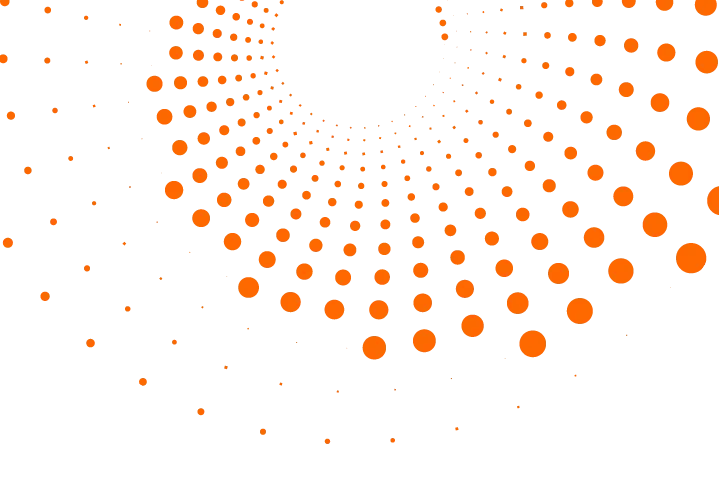The evolution of software development reflects both the world’s technological progress and society’s growing demands. To truly understand the impact of Software 3.0, it’s essential to revisit previous generations and see how each contributed to shaping today’s tech landscape.
From manually written programs to AI-driven code generation, the software journey has undergone profound transformations in how we design, build, and maintain applications. Let’s dive in!
A Brief Introduction to the Evolution of Software Development
Software 1.0 relied on traditional programming with explicit rules. Then came Software 2.0, introducing machine learning and trainable models. Now, Software 3.0 is revolutionizing the field, where AI not only assists developers but also takes an active role in development.
This shift is changing software engineering, redefining roles and processes within organizations. Technology teams are moving toward more strategic responsibilities, leveraging automation tools to optimize workflows and code generation.
In this article, we’ll break down the key differences between these three generations, explore their advantages and challenges, and look ahead to the future of software development.
Software 1.0: The Foundation of Traditional Development
Software 1.0 represents the conventional approach, where every line of code is manually crafted by developers. Despite its age, this model remains widely used, especially in legacy systems and applications requiring predictability, control, and explicit rules.
Many sectors—including finance, government, and large corporations—still rely on Software 1.0 because of its dependability and the high costs associated with transitioning to new methodologies.
Key Features of Software 1.0
- Fully human-written code: No reliance on AI for development.
- Predictability and control: Systems operate on well-defined rules.
- Manual processes: Testing, deployment, and monitoring require human intervention.
Where Software 1.0 Still Dominates
- Banking and mainframe systems that require stringent oversight.
- Government infrastructures such as public service portals and national registries.
- Custom enterprise applications, like internally developed ERP systems.
Many organizations continue to operate under the Software 1.0 paradigm because of the financial and cultural investment required for modernization. This is why Software 1.0 is not only still relevant but vital to many modern operations.
Software 2.0: The Data Revolution
Software 2.0 introduced a paradigm shift, prioritizing data-driven development. Instead of relying solely on hardcoded rules, this approach leverages neural networks and machine learning to train models capable of recognizing patterns and making decisions autonomously.
This has revolutionized fields such as image recognition, natural language processing, and vehicular automation, paving the way for AI-powered innovation.
Tools and Frameworks Powering Software 2.0
The rise of Software 2.0 was fueled by the development of powerful tools and frameworks that simplified machine learning implementation. Some of the most influential examples include:
- TensorFlow – Google’s machine learning framework.
- PyTorch – A deep learning library developed by Facebook AI.
- Keras – A high-level API for neural networks that integrates with TensorFlow.
- Scikit-Learn – A Python-based machine learning library.
- OpenCV – A framework for image and video recognition.
- Hugging Face – A hub for advanced NLP models like GPT and BERT.
Software 2.0 in Action
- Machine Translation – Google Translate, DeepL
- Virtual Assistants – Alexa, Siri, Google Assistant
- Advanced Language Models – ChatGPT, Claude, LLaMA, Gemini
- Sel-Driving Vehicles – Tesla, Waymo
Software 3.0: The Future of Creative Automation
If Software 2.0 revolutionized development with AI-driven data analysis, Software 3.0 takes it even further—AI is now an autonomous co-developer. This emerging model allows AI to create, optimize, and maintain systems with minimal human input.
Although still evolving, Software 3.0 is already making waves through automatic code generation tools, intelligent assistants, and AI-powered low-code/no-code platforms, as we’ll see below.
Real-World Examples of Software 3.0
At first glance, Software 3.0 may seem like a distant reality. In practice, however, powerful solutions to create Software 3.0 applications that seamlessly integrate into engineering teams’ routines are not only available but increasingly accessible.
Let’s look at some examples:
StackSpot AI – Intelligent Automation for Development
StackSpot AI is a multi-agent platform that enables systems to create, share, and automate intelligent software agents tailored for development tasks. It accelerates code generation, streamlines legacy system modernization, and optimizes software engineering workflows. This allows for a more efficient and reliable development process, ensuring that organizations are primed for the Software 3.0 age.
Learn more about StackSpot AI and multi-agent platforms here:
LangChain – AI-Powered Application Development
LangChain is a framework for integrating large language models (LLMs) into software solutions, automating workflows and enhancing contextual data sourcing. Although not an end-user Software 3.0 solution, LangChain is one of the main core tools for building one.
GitHub Copilot – AI-Assisted Coding
GitHub Copilot is a clear case of a widely adopted Software 3.0 application. Integrated into the development environment, it provides real-time code suggestions, reducing developers’ cognitive load and improving efficiency. It’s a prime example of AI acting as a creative partner.
n8n – Flexible Automation for Developers
n8n is a flow automation platform that blends low code with full extensibility, allowing developers to orchestrate actions, integrate APIs, and execute routines based on custom logic. In the context of Software 3.0, n8n functions as an intelligent automation engine, where reactive flows can integrate AI-driven decision-making into the system.
Flowise – No-Code AI Agent Design
Flowise offers a visual interface for building AI pipelines with language models and other components. It allows teams to design intelligent agents with little coding, democratizing the development of LLM-based applications and accelerating the prototyping of Software 3.0 solutions.
How Software 1.0, 2.0, and 3.0 Interact
These generations of software development aren’t mutually exclusive—they in fact coexist, forming a hybrid model where different approaches can complement each other within the same system.
Software 1.0 remains foundational, while Software 2.0 introduces adaptability through machine learning. Software 3.0 takes it further, using AI to orchestrate and automate development, creating, optimizing, and maintaining applications autonomously.
Example of Interaction
In an everyday scenario, we can imagine how that would apply in an AI-powered customer support system. When a user reports an issue, the intelligent agent can:
- Interpret the request in context using a language model (Software 2.0).
- Retrieve legacy system data, such as payment history, connection status, and associated services (Software 1.0).
- Automate actions like reactivating services, sending notifications, or generating payment invoices to address the complaint (Software 3.0).
This interplay highlights the strengths of each generation—Software 1.0 provides stability, Software 2.0 enables intelligent adaptation, and Software 3.0 optimizes automation and efficiency, personalizing every interaction.
The Future of Software Development
Software 3.0 is reshaping the tech landscape. Organizations that embrace this evolution will unlock new levels of efficiency, creativity, and innovation. While AI-driven tools won’t replace developers, they will empower them to focus on strategic and high-impact tasks. The real challenge lies in preparing teams and leadership for this shift.
How is your organization adapting to Software 3.0? Let’s discuss the opportunities and challenges in the comments!
References and Further Reading
- A Data-Driven Approach for Learning to Control Computers
- Adept aims to build AI that can automate any software process | TechCrunch
- Aligning language models to follow instructions – OpenAI
- Attacking machine learning with adversarial examples – OpenAI
- Awesome Adversarial Machine Learning – GitHub
- Competition-Level Code Generation with AlphaCode – DeepMind
- Finding and fixing bugs with deep learning – Microsoft
- GitHub Copilot
- Is GitHub Copilot a blessing, or a curse? – Fast AI
- It’s Too Late—We’ve Already Taught AI to Be Racist and Sexist – Vice
- Jurassic-X: Crossing the neuro-symbolic chasm with the MRKL system – AI Labs
- LangChain | Official Website
- Learning to Prompt for Continual Learning – Google Research
- O que é Software 3.0? – Linkedin
- OpenAI Codex
- Software 2.0 – Medium
- Software 3.0 – novo paradigma de programação inteligente | LinkedIn Pulse – Marcos Bonas
- Software 3.0 — the era of intelligent software development – Medium
- TabNine – GitHub
- Tackling multiple tasks with a single visual language model – Google DeepMind
- Truthful AI: Developing and governing AI that does not lie – AI alignment forum
- WebGPT: Improving the factual accuracy of language models through web browsing – OpenAI

 Skip to content
Skip to content


